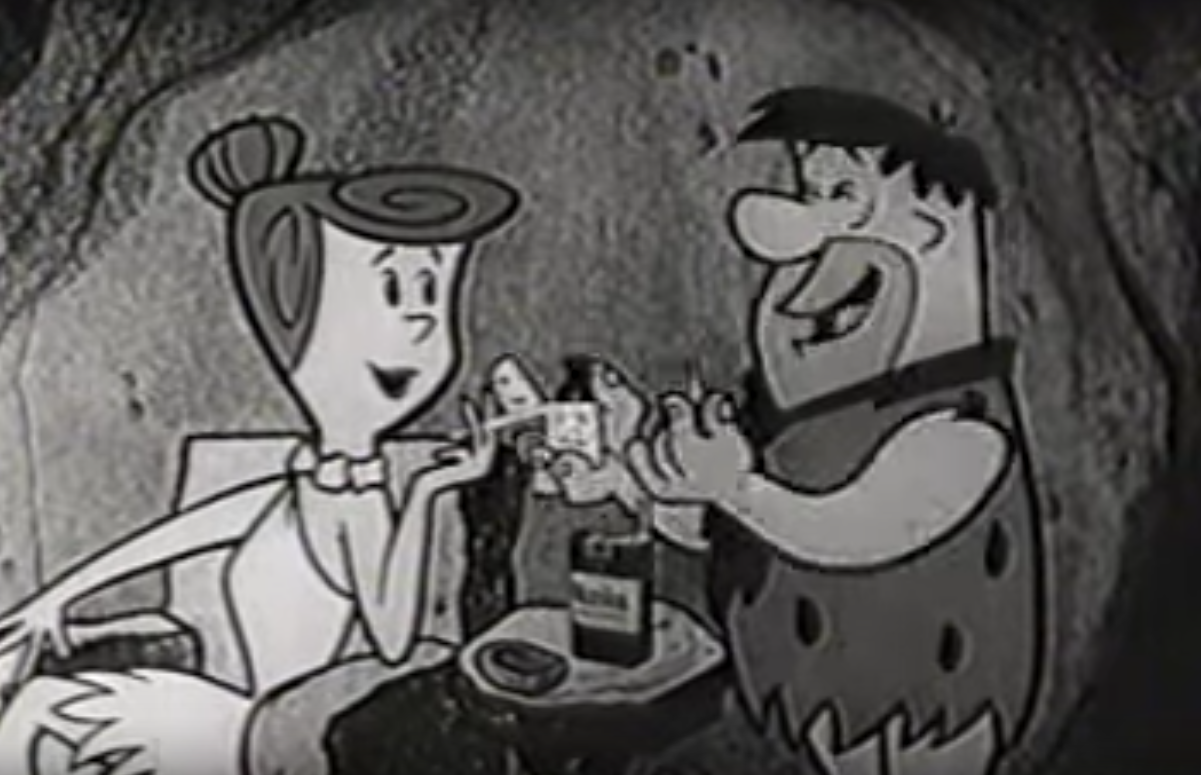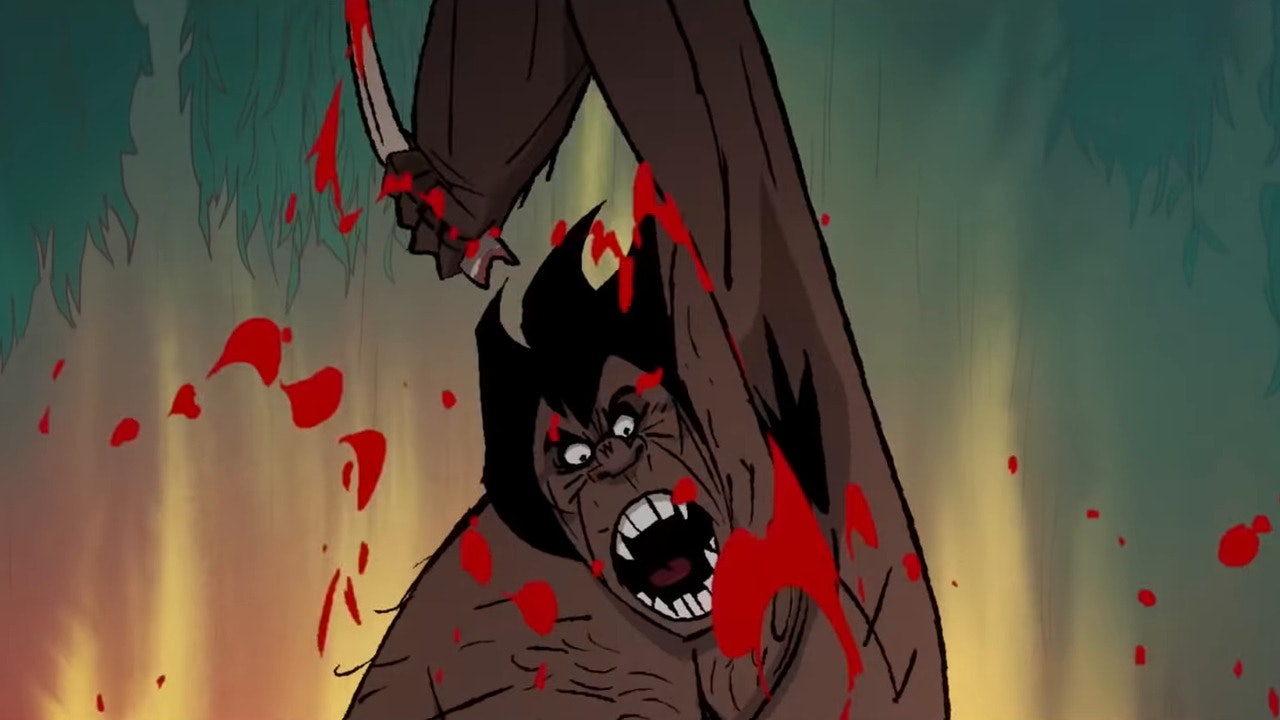Cartoons are for kids” is a stigma that animation has spent many years trying to over come, and in some ways still is. We may now live in a world with “Adult Animation” but this labelling is still strange, most mediums you put “Adult” in front of it means pornographic but animation while it can mean that it can include the Simpsons. Western animation is limited in what Adult animation can mean, it generally means Sitcom, but Genndy Tartarkovski’s new series Primal may look like Zack Snyder’s reboot of the Flintstones it is nothing like the never ending barrage of edgier and edgier Family Guy clones that dominate the genre.
So where does this idea that Cartoons are for kids actually come from? The original theatrical shorts where played in movie theatres along side any movie, of course the travelling roadshow musicals didn’t have the cartoons but audiences wanting to see Casablanca or The Grapes of Wraith weren’t demanding their money back when after the news reel Woody Woodpecker or Bugs Bunny showed up with their zany antics. Some theatrical cartoons from this time are now banned for being to raunchy like Red Hot Riding Hood or Coal Black and the Sebben Dwarves (that ones also rightly banned for other reasons). But Coal Black actually leads to the answer, Disney. Walt Disney animation as well as making theatrical shorts started to experiment with longer animation the first of which being Snow White and the Seven Dwarves, but feature length animation was very expensive so expensive that even the Oscar win made their profit margins razor thin. So to subsidise their income they had to merchandise everything, but adults in the more conservative 1940’s wouldn’t have Donald Duck on their lunchbox and grown women wouldn’t have a Minnie Mouse pinafore, but kids if they loved the character they’d want them on everything. So animation to become feasible needed to be toyetic so the next theatrical release for Disney’s animation division was Pinnochio which is literally about a toy that comes to life. This might sound like I’m being critical of Disney but I see this as a utilitarian act, and without them there would be no innovation within the medium as the highly experimental Fleischer studios (known for Popeye, Felix the Cat and Betty Boop) crumbled under the costs of animation post-unionisation. While Disney had found a market selling toys to children via animated films they did make attempts to try and appeal to a more high-brow and adult audience with Fantasia and the lesser known Make Mine Music, these failed to make the money the studio hoped for. Fantasia was in the mind of Walt Disney a more grandiose idea, they would own their own Fantasia theatres (Fantasia being more of a genre) and every few weeks a new animated short would be added to the playlist meaning that if you kept coming back to the theatre to see it you would see new content each time. In 1945 Walt Disney even commissioned Salvador Dali to come up with a shorts for a second tour of Fantasia, the short itself was finished in 2003 and was named Destino. After Fantasia failed to live up to it’s creators dreams they tried again with Make Mine Music but this time their would be more styles of music in there, while Fantasia was classical Make Mine Music had Baroque and Jazz pieces for Diversity. 1946’s Make Mine Music did alright at the Box Office, but this could be more to do with the war effort than the quality of the film (also because of the war Disney did not make a full feature length animated film until 1950).
Many attempts by animators where made to break the glass ceiling of it just being a kids medium. Hanna Barbera attempted it first with two animated shows, The Flintstones which started out advertising cigarettes and was about two married couples the Flintstones and the Rubbles. Inspired by the Honeymooners the Flintstones storylines were about Fred jealousy of what his neighbours have and him being a neglectful husband. As the series continued the show became more and more kiddie with the additions of more Dino-pets, babies and an alien. Hanna Barbera’s other attempt to crack a more adult audience was doomed from the start, Jonny Quest was based on the comic book art style of Doug Wildey and was meant to emulate the success of Dr No. The show started out with Race Bannon as the leading hero (working title then was “Amazing Race” not Jonny Quest), but with it being animated and with a time-slot that was just before children’s bedtimes the show got altered to being about Jonny. Further medalling happened and the show had a cartoon dog called “Bandit” added to show, Bandit was also drawn in a completely different style to the rest of show and more and more corners where cut because the show wasn’t that profitable and the shows art deteriorated and started to look more and more like the Flintstones. Hanna Barbera had another attempt to break into prime time television with the animated show “Wait till your father gets home” which is most notable to be the last prime time cartoon series (not one off special) before the Simpsons, Hanna Barbera also had so little faith in selling the show as animated they produced an alternate version of the pilot as a live action sitcom.
An oddity of theatrical success for animated came about in the form of Ralph Bakshi’s Fritz the Cat and it’s success came from leaning into its subversion of a children’s genre. Fritz the cat featured un-family friendly themes like Sex, Drugs, unconventional sex and experimenting with Neo-Nazism. The films success spawned many imitators including; Down and Dirty Duck produced by Roger Corman and directed by one the future creators of Rugrats and Once Upon a Girl a fully animated pornographic cartoon made by disgruntled Hanna Barbera employees in their spare time and far less successful sequel to Fritz (with neither the comics creator Robert Crumb or Ralph Bakshi’s involvement), Bakshi’s next projects were Heavy Traffic and Coonskin which is even more controversial than Fritz. After Coonskin getting banned Bakshi started making fantasy films, the first of these was Wizards but starting with his adaptation of Lord of the Rings he started using a technique called rotorscoping. Bash wasn’t the first to use this technique, it was first used by Fleischer studios for their out of the inkwell series and it was actually quite normal for it to be used in hand-drawn animation. Walt Disney often used it for more realistic movements in their children film most notably Margaret Kerry for Tinkerbell in Peter Pan. Rotarscoping is done by filming someone for reference and then drawing an animated character over them, for Ralph Bakshi’s animated fantasy films he filmed an entire film on a low budget with props and the drawing fantastical elements over them.
Animation broke into prime time with the Simpsons and while the earlier episodes tackled more taboo subject matters like depression in it’s first season. But by Season 11 when all of the shows creators had left Ian Maxtone-Graham took over and the show changed, it lacked any empathy or investment in the characters. The animation now wasn’t being used to increase the storytelling, it was being used more of gags and so Homer could get away with things no human could, shattering the bounds of reality that the show had previously. Adult animation had found it’s place on TV (while Bill Plympton did make feature animation and Ralph Bakshi continued until his career collapsed around Cool World). MTV created Liquid TV that featured shows like Aeon Flux an Avant Garde cartoon series and The Maxx (an adaptation of Sam Keith’s comic book) neither made a mark but what was successful was more of the same. Every cartoon comedy (even ones intended for children) where told to be more like The Simpsons, so inevitably we got Family Guy. Family Guy became The Simpsons minus any subtlety, but even with that as the show progressed the point got missed by everyone even those who work on the show, Peter is not supposed to be likeable he’s an illiterate slob and a chauvinist whilst Homer in his earlier appearance (pre-“Jerkass Homer”) is flawed and lives in a world where anyone who can help doesn’t care, Peter is irredeemable. Animated shows became a way of presenting unlikeable protagonists getting away with everything, animation does have a tradition of winners and losers look at the Looney Tunes Bugs Bunny, Tweety Pie and The Road Runner always win and Elmer Fudd, Sylvester and Wile E Coyote always lose, but these cartoons are detached from reality as opposed to Archer. Now I actually like Archer but I often wonder does this need to be animated? especially as the art style in the creators own words is “too look as realistic as possible” and yes the characters and sets are very detailed but you know what looks like real people? actual humans. The animation seems to be there to make the characters pain funny, we don’t think “that poor man” we think “ha ha it’s ok he’s just a drawing”. It creates a detachment a lack of empathy, which is the opposite of what Primal achieves with it’s animation.
Finally after all that context I’ll explain why I think Primal is finally animation for adults living up to it’s potential. Of course this is entirely from a fan perspective, I have very limited experience with animation, I’ve made the flash animation of a bouncing ball that everyone makes as part of an IT course but everything else I’ve ever tried to make with animation has been limited at best (and nothing like what I hoped it would be). So I’ve been comparing the techniques of one conjurer to another as they use skills I do not possess but this is the internet and anyone who can type can express an opinion. Genndy Tartakovsky is a master of his craft, and with his first series entirely made for Adult Swim (he previously made Samurai Jack which had it’s last series on Adult Swim and increased the violence) he has done something different to everybody else. Primal’s storytelling is done entirely dialogue free. It’s all told in animation whilst other shows will have 2 characters talking, in Primal it’s all in motion and we know what Fang (the Dinosaur) and Spear (The Caveman) are thinking in any scene. Silent characters are nothing new to animation, but they’re mostly reserved for gags like Tom and Jerry, in Primal the stakes are serious. The two characters are fighting for survival and are also working out how to get along, it’s all conflict and resolution. Not to mention it’s violent and you genuinely feel the pain of these characters and hope they survive, Spear is as expressive as an comic panel by Jack Kirby. In fact the whole art-style is quite Kirby-esque, it’s all stylised. Primal isn’t the only piece of animation I’d like to add to the Adult animation renaissance the other candidate would be Netflix’s “Love, Death and Robots” but that as anthology is a mixed bag, with some falling into the trappings of “make it look as realistic as possible” which really adds to the stigma of animation as a lesser art form (these episodes almost always bored me) but some like Zima Blue told an interesting sci-fi story with an animated style of their own proving animation can do more than cheap laughs at others expense and still have a more “mature” audience.
/cdn.vox-cdn.com/uploads/chorus_image/image/65413741/Primal1.0.jpeg)



